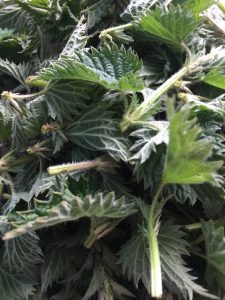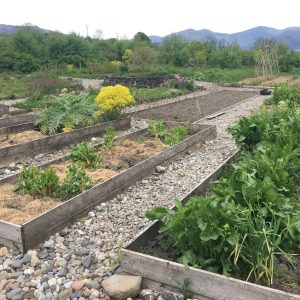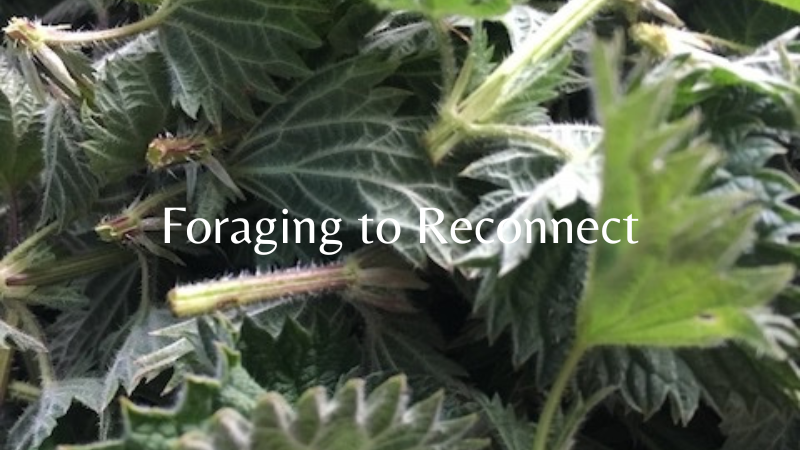“Mankind evolved in the wild. Foraging and hunting are in our genes.”
A Handbook of Scotland’s Wild Harvests by Fi Martynoga
The why of foraging
This is not a how to forage article, there are links to some websites for that, at the end. No, this is more of a call to reconnect through this forgotten art. It is the why of foraging.
Reengage with ancient wisdom
Realign with the natural abundance
Reconnect with our larger self, planet earth.
As I left for my walk one morning this week I swithered about taking my bag. This bag contains various items that I may require when out walking. A space blanket, pot of nibbles, water bottle, small towel, empty plastic box and rubber gloves fill the main compartment. Stuffed on top a plastic bag and waterproof trousers fight for space. My notebook and pencil, scissors and knife reside in the pocket.
After a silly inner debate involving concern about what others might think seeing me out for a mini walk with the full kit (yes that old worrying about what others think can still rear it’s head), I managed to extract myself from the limitations of my old mind and set off bag on back.

Provided by nature
It was just as well I did for I came back with a shopping bag full of nettles which I is now bubbling away making nettle beer. Well, I hope it is, I’ve never made it before. I also picked a little posy of rose petals and elderflowers which I made into tea. I sipped this sublime brew as I started to write this article.
Our planet is the most magnificent place. We are so lucky to have been born into this incredible world, to have a chance to participate in this phenomenal interconnected alliance of beings. This complex web of life created us, we human beings. Everything we needed to make the evolutionary journey that brought us here, to this time, was provided by nature.
Our evolutionary path
Each of us relives this journey as we develop in the womb. Our progress through gestation traces our evolutionary path from single cell organism to the sophisticated mammal we are today. Early on, as our hearts develop and start to pump, we join the collective beat of life on earth, from earthworms in the soil to birds in the sky this common ancestry connects us. We have all come from the same beginnings.
Throughout this incredible process our mother’s bodies provide all the nourishment we required. Each additional cell, each tissue that developed was made from what she provided. And so it is with all of life on earth, we are here because the Great Mother, our planet provided us with all we needed to make this extraordinary journey through the millennia to where we stand now.
Nourishment from nature
For thousands of years we gathered our nourishment from nature, many indigenous people still do. It was our larder and store. Then the gradual separation began. Farming, followed by creeping industrialisation began to isolate us from the wildness, our lives became more and more domesticated and tame.
Now we almost entirely rely on the supermarket system for our food. Dominated by the massive agricultural businesses this arrangement degrades our soil, pollutes and poisons our waterways and has contributed to the terrible mess we find ourselves in at this time.
“There are children in Scotland, brought up with supermarkets, who are incapable of making the connection between their bowl of breakfast cereal and the living plant from which is was produced.”
A Scots Herbal by Tess Darwin.
Find our way home
This partitioned existence contributes to the destruction of what we most need. We no-longer understand our deep and intimate connection to the land, the plants, and the animals. This makes it easier to engage in practices that deplete and destroy. We don’t necessarily do this because we want to but more out of an indifference brought about by the separation we have adapted too. This estrangement makes it harder to care. We need to find out way back home, back into right relationship with this planet upon which we live and depend.
Many of us do already spend time in nature but my invitation is to take this relationship a step further. Engaging with the lessons from trees is one way I have written about previously, but now why not stop and engage in a whole other way?
By foraging we connect through sight, touch, smell and taste, we reawaken an ancestral knowing, something in us lights up and comes back on-line.
Delicious fresh tea
Last week I was part of a Carer’s Group visit to a biodynamic herb garden and farm on the Isle of Lismore. The owner Eva made a delicious fresh tea with nettles, mint and lemon balm from her garden. For some of the group this was a revelation. This fresh and vibrant brew stood head and shoulders above any dried and dusty offerings found plastic wrapped and packaged on our supermarket shelves.
For some it was their first encounter with fresh herb tea and they loved it. You could sense the internal illumination through this simple reconnecting ritual of drinking tea.

Fresh and vibrant
A similar thing happened to me a few years ago. A new friend who was studying to be a herbalist came round. I offered her a hot drink and she took a wee bowl and disappeared into the garden. Back she came with nettles, dandelion, plantain and mint (I had consider these weeds till then but they are actually something we can change our relationship to and meet instead, as a nourishment).
It was a revelation to me. The tea felt so fresh and vibrant to consume, it felt right.
This simple practice of gathering and using a few items from nature helps start or strengthen a reconnection process. It deepens our knowing that we belong here, that we are part of all this abundance and wonder. My wish is for more of us to join this return to our wild wider self.
“Our task must be to free ourselves by widening our circle of compassion to embrace all living creatures and the whole of nature and its beauty.”
Albert Einstein
![]()
Resources
Here are some resources to get you started:
Food Programme Podcast – Stranded! How to Eat on a Desert Island.
Foraging Websites:
Courses:
Seaweed foraging on Lismore Island




Perfect timing Mairi as I contemplated nettles yesterday and thought I MIGHT do something with them this week….Ready to brew, thank you for the gentle reminder.
You are welcome, watch out for those stings.X
I love your posts Mairi 🌱
I have a table full of elderflower drying for tea and some more to make into elderflower and lime kefir to come.
You are so right
Foraging connects us to the seasons and so the earth. The waiting and waning is a beautiful process. Thank you for bringing this to my consciousness this morning 🌳
Thank you Erika. I like the sound of the elderflower and lime kefir. I make kefir already but I’d love to try that, how do you make it?
[…] Learn to forage, how much more local can you get? […]